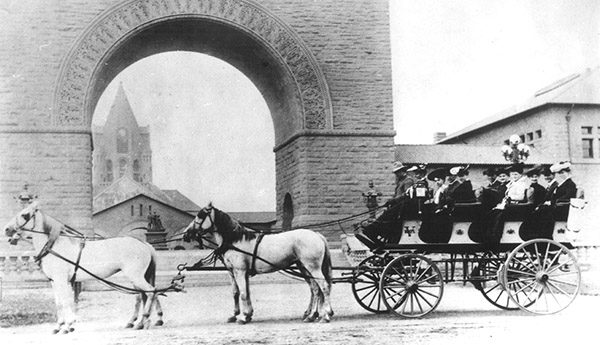History
Stanford's history of providing free transportation is as old as the university itself. In the late 1880's, while the University was in its construction on the farm of its proprietor, the railroad baron Leland Stanford, Stanford ran a horse and 12-person buggy service to and from the train station just across El Camino Real. In 1909, the horse and buggy gave way to electric streetcars. That lasted until 1929, when the county ripped out the tracks to make room for widening El Camino. A private bus service took the place of rail, and in 1963 the city of Palo Alto agreed to subsidize it. In early 1973, following the formation of the Valley Transportation Authority, Stanford began providing a free shuttle service around campus as well as back and forth to the two local train stations and downtown Palo Alto.
The Marguerite shuttle is named for the horse that pulled the carriage of Asa "Uncle John" Andrews as he ferried people from Palo Alto to Stanford. Marguerite was apparently Andrews' favorite. We are told that Andrews either drove for Jasper Paulsen, who owned a livery stable in Palo Alto, or leased space from him.
Initially designed to make coming to Stanford by train more convenient, the Marguerite remains most popular among staff and faculty. The other major users are students getting from place to place on the spacious campus. All routes on the system are free and open to the public.
Very Special Thanks To Our Partners!
Marguerite service to the Caltrain stations is made possible in part by generous grants from the Bay Area Air Quality Management District Transportation Fund for Clean Air and the Peninsula Corridor Joint Powers Board.
Marguerite service to Downtown Palo Alto, the Stanford Medical Center, and the Stanford Shopping Center is made possible in part by contributions from the Stanford Medical Center, Palo Alto Medical Foundation, the Stanford Shopping Center, and the Stanford Real Estate Office.

